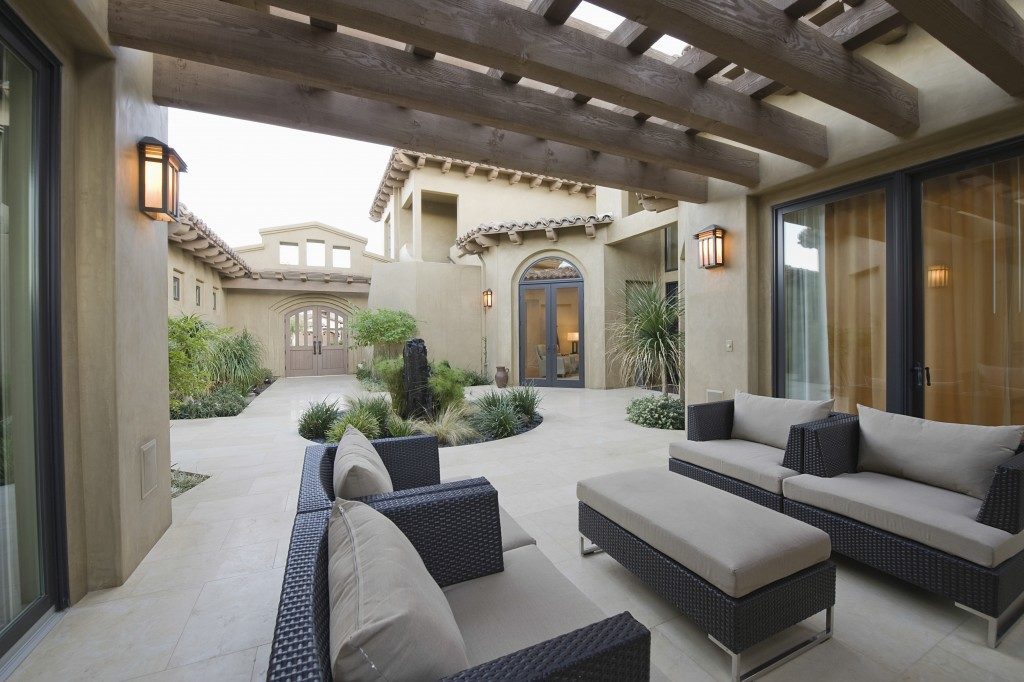Are you planning to turn your vacant lot into a patio? Although it’s a great idea, there are several things that you need to consider before starting to build one from scratch.
Like many other things, building a patio comes with its own set of challenges. Almost every homeowner who had one in their backyard had to worry about drainage issues at some point. Whether it’s because of the heavy rain or an ineffective water route, there’s always a way to solve them.
Correct a Slope Grading Issue
Most of the drainage issues that homeowners encounter result from an inadequate slope. Too little incline from the yard to the drainage paths prevents the water from flowing away from the house. Rainwater and runoffs don’t flow away, as a result. The problem can get worse if the downspouts attached to your gutters aren’t designed or built properly. Once it rains, more water will flood the yard.
To fix this issue, you can build a storm drain and catch basin where rainwater and runoffs will naturally flow. A warning, however: this grate-covered canal needs regular cleaning because it could easily get clogged with leaves, loose soil, and other debris over time.
Remedy for Downspout Problems

Aside from having the wrong yard slope, another issue that you also need to think about is downspout problems. It usually happens when builders don’t install downspouts along with the roof’s construction. So let this be a tip: besides checking insulated patio roofing costs and materials, you must also research downspout designs. Ineffective downspouts can cause rainwater to flood around your house’s foundations instead of draining away.
One of the best ways to fix this problem is to divert water away from your yard and to the drainage infrastructure. If your property is perfectly level with the street, then you need to pitch the slope of the drainpipe so that the rainwater will go down. A pop-up emitter can also work in this situation. It diverts pools of water into a drainpipe, and hydrostatic pressure causes the pipe’s “lid” to pop open, releasing the water in a single location. You can install the lid on the edge of your property, where it will be easy to construct a drain path leading to the stormwater drainage.
Rain Garden
Do you notice any wet areas in your backyard that always seem wet even when it’s not raining? One of the reasons could be sloppy soil grading (also called land leveling). Ideally, the lot a house stands on should have a subtle slope that will naturally drain water away from the middle and out to the edges of the property. Another is poor soil infiltration, which means the soil composition doesn’t absorb and hold water as well as it should.
One way to fix both soil grading and soil infiltration problems is to make a rain garden. Pour gravel on your yard and plant moisture-loving plants and ferns near the perpetually wet areas. When done right, rain gardens can keep your yard from becoming muddy and boost your house’s curb appeal.
Solve the drainage issues in your yard before building a patio. This way, you can enjoy it fully once the project is completed.

